|
I keep getting asked about how to use magnet strips for students' names...
And here is the original post with similar information. When I made this post in 2014, it must have been the year I transitioned from printed names (using the printer) to students writing their own names in a certain color for each class. As of 2017, students use the color of their choice. Some even choose to decorate this small space! They can also take their names home over the summer. If they bring them back the next school year, I let them in on the fun of answering the questions when they stop by to visit!
Please share with me what YOUR question of the day looks like in your class(es)!
0 Comments
Near the end of the year, not every child moves his or her name over at the start of the class. I can still take quick attendance, and if it's not a question I feel will spark real conversation, I don't bug those students to answer it. I've got myriad questions for our "Question of the Day," and some are more interesting to certain students than others. However, many times students will add one of their own, because they know it is always welcomed once they learn the types of questions and possible answers that we use. This latest student-chosen question had the most buy-in from my students! There were only three students (from homeroom) who did not answer! Who'd've thunk? ;)
I've got three things to celebrate - thanks to readers of Shift This!
Here is your quick invite to join me at the BLC conference in July...
I'm also hosting a Genius Hour "Master Class" the Tuesday prior to the main conference.
More information about the Master Class HERE. Unmapped Potential by Julie Hasson and Missy Lennard (PurposefulPrincipals) went on my list to read after a few quotes came at me from Twitter. This is not a review; this is simply one of my take-aways. I think I got something out of this book that might not have been the authors' intent... I believe most of the focus (except for the stellar chapter 8 which gave GREAT information about how to lead your team) was supposed to be about the potential in our students. I learned better ways to work more effectively with colleagues that don't necessarily work the same way I do - to recognize and use my colleagues' potential. Bear with me here... "If you want to change the world, start by making your bed." This quote, by Admiral Charles McRaven, came across my twitter feed a few days ago, and then I read it in Unmapped Potential - right on page four! The authors go on to say, "Simple steps done with consistency and conviction can create a big impact. And making a small, positive change in one area will positively impact all other areas." My thoughts went right to teacher interactions. If you've got a pretty good rapport in class with students, in the hallways and after school, and you're anything like the readers of Shift This, the most difficult part of your day might be when you interact with other staff members. I've been getting many direct messages and emails from teachers who say that chapter ten on "Resistance" from Shift This resonated with them, because they feel they have no one they can go to during the day. They're thought of as the "crazy" teacher who has "loud" classes or tries "weird" activities, where no one is learning (grrr). And since there's only a certain amount of time during the day, these teachers that encounter this resistance decide to only focus on their students, and not on their relationships with their peers. Many of them have "given up." They'd rather put their energy into their students, because INSIDE the classroom is where they see the most collaboration and growth. My mind was on these readers when I picked up Unmapped Potential, so I kept substituting "students" for "teachers" as I read. Next, I read, "...belief plus action helps you realize your goals." Julie and Missy went on to say that what we believe is what will happen. They shared a story about a boy who lost his eraser. He BELIEVED that another student had taken it, and he became very angry. Even though his teacher gave him another, he was still angry - at his BELIEF - not at the actual situation (which had been resolved). This story will stick with me for a long time, because I do this. I do this. I think one thing about a person, and it stays with me. I've often that "that teacher doesn't want to change. That teacher is happy with the status quo." The authors say "Your struggle to connect with some people is likely rooted in your thoughts about them" (57). My thoughts/beliefs have driven a rut into my map about this person. It's so deep, and I don't even know if it's true. "If we focus on changing our thoughts about them, we can improve our relationships with them" (58). I realized I had to take a break from the book and come up with new beliefs. Stop reading here for a moment. Think of a person you believe "doesn't care" or "is negative" or "thinks my work is crazy." Then think of a POSITIVE belief you could honestly believe about that person. Once you've done this, please keep reading... If the person is a teacher, we can most likely be correct believing that "all teachers want their students to learn." Another belief - on our part - could be, "I believe this will be my best school year ever." I can see how saying this daily when you get ready for school could actually work!
We need to put up the "road closed" signs on that rutted road (belief) for now, hoping weeds will sprout through the cracks in the asphalt and that our new belief will take hold - a brand new road, clean, smooth, and ready for us to travel many times. (Did you know - this new road has stops along the way for refreshments? And most likely chocolate?) What's next after creating a new belief? When we get agitated, frustrated, angry or worried, we need to repeat the new beliefs, and not let feelings influence our actions. Prior to this happening, however, we need to visualize how we will respond to negativity if (when) it appears. At the end of each chapter there is a section called "Map-Changing Actions." The authors give great suggestions as to how to visualize your response (at the end of the fourth chapter). "Close your eyes and see yourself successfully performing something challenging... (this could be a conversation with that teacher) ...Imagine the sensory details - what you see, hear and feel - as you perform the task. Envisioning your state may also be helpful. For example, seeing yourself in a calm state may decrease physical symptoms of stress when the time comes to perform it. Finally, envisioning success can enhance motivation and confidence, making you more likely to continue despite challenges." Visualization has been used for how many years? For how many reasons? Yes. This could work. We need to make the time. (Heck, why not right now??) When I think back on situations that might arise again at my own school, I can visualize how to keep calm and patient, and then what I might ask to get the conversation going. I'll try to ask more questions than give answers, and I'll put my focus into listening to responses. If you've got an issue with a colleague, you've got your reasons - your purpose - for mending these issues. If it affects you negatively, you want that out of your life. You can only control so much. What you can control is your new beliefs. Spend some time shutting down those negative roads on your mind map. Spend more time setting up new beliefs to latch on to. Focus and apply your efforts on what you can control. Notice and appreciate the strengths in this person, and respond in ways that make both of you better, instead of bitter (29). If you try to avoid the challenge, "you cheat yourself out of an opportunity to grow" (50). And "...you will likely regret being angry, but you will never regret being kind" (61). "Your new way of responding to this person might just reduce the very behavior frustrating you" (64). I can see how teachers can use the authors' messages to develop better relationships with colleagues. Looking through this lens will hopefully help those that encounter resistance throughout their day! Please share with me in the comments what beliefs you may have had and any new beliefs on which you choose to focus! When are you vulnerable?
I was asked this question once, in a marriage counseling session. I didn't know what it meant at the time. It took me awhile to process it. When I realized I had STOPPED being vulnerable with my ex, that's when I vowed to always just be me - vulnerable as heck - with any other new relationships. My second (and last, of course) husband and I are 100% vulnerable with each other, and that has made our love and life so much stronger. Being vulnerable means you have nothing to hide. My heart is on my sleeve, and I trust others. If people take advantage of this trust, I then learn my lesson through reflection, and close my heart back up with those particular people. When are you vulnerable - at your school? I'm guessing your answer would be every day. During the school day, you are in front of eyes that look up to you - you feel that you need to make a difference and do your best. You try, no matter how goofy you may feel, then you try again - with your students' best interests at the forefront. When are you vulnerable - in your profession? Many teachers have been debating starting a blog. Writing is a vulnerable act. I can see why many teachers are afraid of writing blog posts, much less a book! I've been there - I'm STILL there! Seeing that people I know and respect are reading Shift This is scary - I always say "eek!" when I see a tweet of the book in someone's hands. Writing every blog post is also a vulnerable act for me, as it is for countless others. Yet it is important - now more than ever. We need to share our stories - our truths - and learn from each other. We need to share our own stories to combat any negative view of education. New and veteran teachers are telling me that Shift This has made a difference and invigorated them. I've got principals asking me for advice as to how to run school meetings or to provide a workshop on the ideas in the book. Teachers are sending me direct messages, confiding in me about the resistance they encounter at work, and how words I've written have helped them feel like they're not alone. These educators are reaching out and showing their vulnerability to me, which I respect. I've been reminded of a few things since Shift This came out in May...
When are you vulnerable? You could reply in a comment on this post, sure. That's one way of being vulnerable and sharing your thoughts with the world. Or you could write a blog post all your own. This post was inspired by Aaron Hogan in a #tlap chat about his new book Shattering the Perfect Teacher Myth. He and I are on the same wavelength - I finished his book after I wrote this draft. He's got an entire chapter devoted to valuing vulnerability, and another on the importance of blogging and sharing with the world! I was reading a blog post about global connections and grades (or lack thereof) from a "new" connection I've made on Twitter recently - Monte Syrie. At the bottom of his post, he writes, Do. Reflect. Do better. That struck a chord with me. Reflection is such a HUGE part of my learning, teaching me so much. I learn more from my failures than from my successes - as long as I reflect and plan how to tweak (or ditch)! I retweeted his post, and then told him - Bam. He hit me again. "Lucky to work in a prof. that gives me the opportunity to redo."
Yes. Yes. Yes. Some days we may be kicking ourselves for what we tried - and how we failed - in a classroom of students. And then... then we have the opportunity to reflect, revise, and redo... ...JUST AS WE ASK OUR STUDENTS TO DO. If you are not yet reflective in your practice, it's time to begin. Begin right away, so you can learn from your successes and failures TODAY. This can come in the form of simply thinking, making bullet points, filling in plus/delta charts, journaling, or blogging. If we want our students to be reflective, we've got to reflect ourselves, share our reflections, and support a community of learners. It happens. Sometimes it makes me late - to a meeting, to a party, to class. It's human. WHY, then... WHY is this story about Shanna Peeples' (who I totally respect) bathroom policy considered radical? Why is it even a discussion? You've gotta read this story! Why do some teachers want control over when students use the bathroom? Chapter four in Shift This mentions giving students control over when they leave the room. In room 239, we have a sign-out sheet that students can use - to visit the bathroom, get something from their locker, see the nurse, visit the library... They sign out and then they leave. I have seventh graders. They love this procedure.  Do you think they don't take advantage of this? Of course they do! So how do I notice this, and then what do I do? (And how can I look so casual about it?!) First, I offer them practice. At the beginning of the year, I go over our sign-out system quickly, and simply ask that students are courteous about leaving. Try not to leave in the middle of a discussion or dissemination of important information. Try to NEVER leave when another student is sharing something. Some need to be reminded, but school is a great time to practice. I trust them until they prove me wrong. At the start of the year, not many students take advantage of this system - it's as if they're not sure of it. Can this be true? But in another class, we get three passes for the quarter... I can just go when I need to? Still, after four weeks in, I take home the sign-out sheets. I make tally marks on a roster to see who may be abusing the system. What does "abusing the system" even mean?? I have 80-min. blocks, with a four-minute break in between. Sure, they could go during break, but many other students are using that transition time so they don't have to use a pass... And for my class after lunch, should students be given more leeway? Who am I to decide this?? So what I do is I figure one time a week should be normal. (Right? Is it? I still don't know.) There are some students who never leave class. Then there are others... After I tally, I jot down who I should talk with. In a quiet one-on-one conversation, all I ask is, "Is there a reason you need to leave our class so much?" Sometimes their answers will surprise me! And many times, they leave because they forgot something at their locker - this is a different issue, and this is what I use the tracking sheet for - that's (narrative) feedback that gets shared in my online grade book. I show the average for the class, and we - together - set a goal for the next four weeks. Usually this discussion and goal helps. 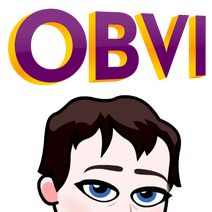 Does it not work sometimes? Obviously. I have students who struggle in ELA. Leaving the room is an escape, and I'm aware of this. When the work gets tougher, this student will escape more often. The next four weeks I tally once again. We have the discussion again. And what do we do? We need to come up with a way to MEET the student's goal. We need to come up with a PLAN, since simply setting a goal did not work. This past year, my co-teacher and I simply used an index card with my initials on separate pieces that I cut partially for the student to tear off and then just leave - no questions asked. When the index card is gone, they're done for the four weeks. It works - and is still fairly discreet.
And yet... I need to tweak my own system sometimes. Last year, with three weeks left of the school year, I was tallying... and I stopped half-way through. Too many students were suddenly leaving a LOT from our class = 15 or more times in four weeks!! This was the first time I'd run into this. So... I went back to my old passes I still had on a document, and printed them out. The new plan was for students hand to it to me, I initial, and they leave the room. When they got this paper, they GROANED! When I explained that too many people had taken advantage of the system the last four weeks, they nodded, giggled, and said nothing more. (Plus, we only had three weeks left of school - that's one per week!) I had to add this caveat, however - they could not buy or sell them. They could give them away to friends in need, but they could not buy or sell them. I knew this group of entrepreneurs... They surprised me again - I found one that someone left behind, tucked it under the transparent desk cover thing-a-ma-bob, and a student used it and then returned it!! I love 7th graders. I want to treat them like the humans they are, and then tweak the plan when it's not working. How do you handle bathroom breaks? Leave a comment with your idea we can all steal! 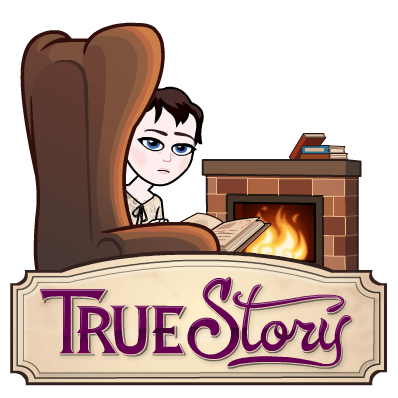 I had my last day of my 22nd year as a teacher this week, and the very next day I was in Milwaukee - presenting three different sessions and signing books during lunch at University School of Milwaukee's Summer Spark conference! My lesson learned: Teachers have GOT to tell their stories. One person mentioned in my middle presentation on why I'm using feedback in lieu of grades, "I would think that this way would be much harder than using grades." "Yes," I replied. "It sucks." Uneasy laughter came from the audience, until I added, "I wouldn't be doing all of this extra work if I didn't think it was totally worth it." Sharing that teeny bit of my story - not hiding the fact that going without grades is one of the hardest things I've ever done in my career - helped other educators go back to the reasons WHY I had to change the learning in room 239. Another tidbit I learned at Summer Spark (reserve the dates for next year - June 11-12, 2018!) - Shift This has an impact on others. I've been getting comments that prove to me that sharing my story was worth it. People are connecting with small portions of the book, along with larger ideas. Those that work in isolated bubbles are finding their tribe through others reading it and wanting to continue shifting their practice. Keep it up, educators! Keep sharing your stories and connecting with others. This is how we build our confidence and stay motivated to do the best we can for the children in our charge!
You've seen the ad from 1997 for Apple. If not, take one minute now...
Chapter ten in Shift This! is about resistance.
Resistance from teachers and parents is the hardest to handle. I've written (and will never forget) about when a parent told me (in front of my principal) that "Genius Hour is crazy." I've seen the way teachers roll their eyes when I share a supposed "crazy" idea. I've heard teacher friends tell me about other teachers who don't like how I run class - even though they've never stepped in it before. And, yes, they're invited any day - especially when I put out our "observe us" sign.
It doesn't matter, though. I'm SURE some people think what I do is crazy. I used to think that was okay. I had a realization last night. I am now positive that it's good to be called "crazy" for what I do!
Hubby asked me what I think about the teachers who think what I'm doing is crazy. My response: "They're crazy. They conform." We sat for a moment, and then busted out laughing. Those words came out of my mouth? I looked up "conform" this morning, and from a simple Google search found "to comply with rules, standards, or laws." Hopefully teachers are conforming in this way!! This meaning, instead, hit me: "to behave according to socially acceptable conventions or standards." This reminded me of "status quo" - "the existing state of affairs." Many teachers are NOT happy with "the existing state of affairs" in our schools. The fact that I try "crazy" ideas, along with my gratitude for all I have in my life, are two (of many!) reasons why I am as joyful as I am. Bring on the stares of the blue streaks - today it's a representation of all the "crazy" stuff I've done in my life! I want my students' education to be BETTER than the status quo. "Here's to the crazy ones: the misfits, the rebels, the troublemakers the round pegs in the square holes, the ones who see things differently..." As long as we're doing what we believe is right, and helping our students learn how to learn, we can change things. "The people who think they are crazy enough to change the world are the ones who do." If we want our students to change the world, should't we be that role model? This post was cross-posted on my original blog. |
Joy KirrTeaching since 1995, each year feels like my first as I see how much children can do. Categories
All
|
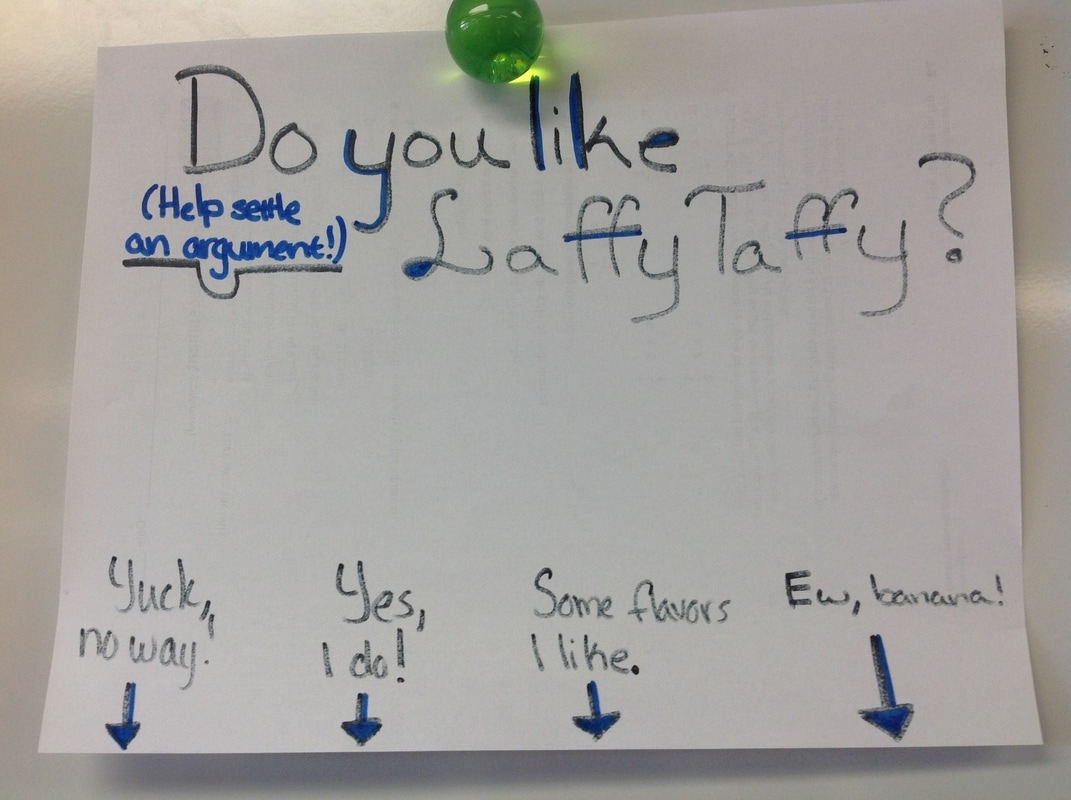
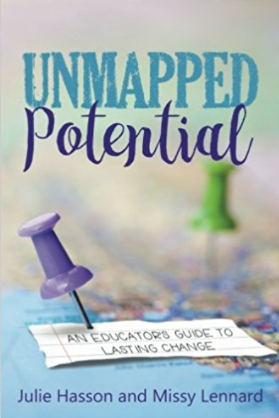
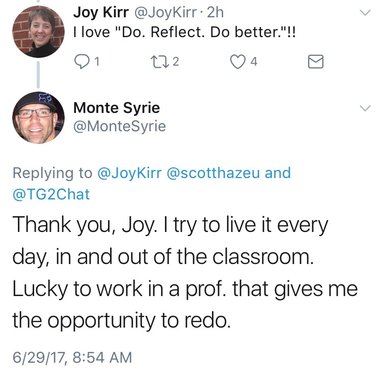

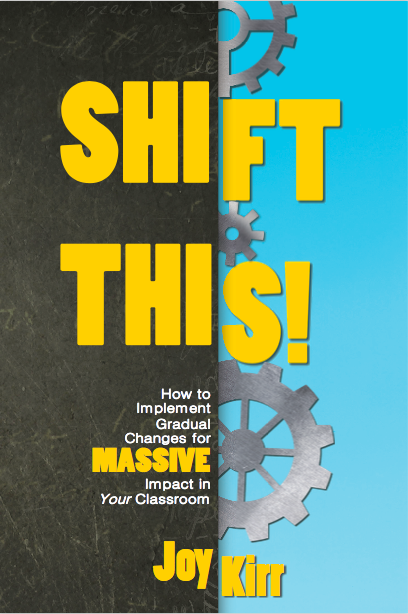
 RSS Feed
RSS Feed
